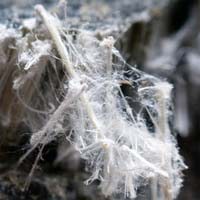Mesothelioma Risk Depends on Asbestos Fiber Size

Scientists who study the connection between asbestos fibers and mesothelioma say they now understand what size particles pose the most danger.
Asbestos is the primary cause of mesothelioma, but some manmade fibers can also be carcinogenic. Manmade nanotubes or nanoparticles are carbon molecules constructed for use in nanotechnology, electronics, optics and other fields of materials science. Some studies have suggested that their shape can allow them to cross membrane barriers inside the body and cause “inflammatory and fibrotic reactions.” Such reactions are believed to be the same mechanism by which asbestos fibers may trigger malignant mesothelioma in the pleural membrane around the lungs.
Although scientists have long known that the affects of fibers depends on their length, the “key threshold length” that might trigger mesothelioma has never been explored. Because the length of manmade nanofibers can be precisely defined, researchers in Scotland used nickel nanofibers and carbon nanotubes to measure the relationship between fiber length and mesothelioma risk.
The team injected nanofibers into laboratory mice and then measured the pleural inflammatory response by looking at sections of the chest wall using light and electron microscopes. By using various sizes of nanoparticles, the team was able to identify, for the first time, the minimum fiber length needed to trigger inflammatory diseases such as mesothelioma.
“Our results showed a clear threshold effect demonstrating that fibers beyond 4 µm in length are pathogenic to the pleura,” they conclude in an article in Toxicological Sciences. The results have implications not only for understanding and predicting asbestos-related mesothelioma risk but also for creating synthetic nanofibers that are, as they say, “benign by design.”
Most mesothelioma is caused by asbestos exposure, but only 10 to 20 % of those who are exposed ever develop mesothelioma. A better understanding of the particle size/inflammation connection may help scientists better predict risk and screen for this disease.
Sources:
Sharifi, S et al, “Toxicity of nanomaterials”, February 27, 2012, Chemical Society Reviews, February 27, 2012, pp. 2323-43.





